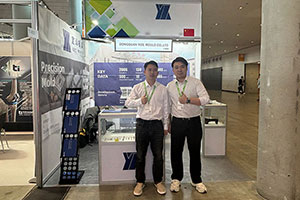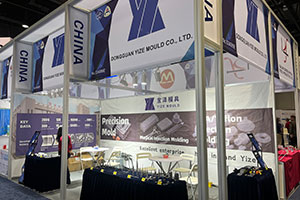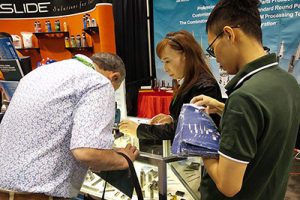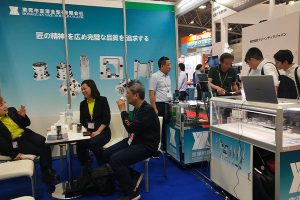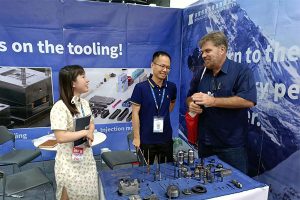How to Prevent Tungsten Carbide Dies from Sticking
How can tungsten carbide dies avoid sticking? In modern manufacturing, tungsten carbide dies are highly favored for their high hardness, excellent wear resistance, and superior mechanical properties. However, with the […]
How can tungsten carbide dies avoid sticking? In modern manufacturing, tungsten carbide dies are highly favored for their high hardness, excellent wear resistance, and superior mechanical properties. However, with the continuous advancement of production technology and the increasing diversification of product demands, tungsten carbide dies face numerous challenges in practical applications, one of which is the issue of sticking. Sticking not only affects the service life of the dies but may also lead to a decline in product quality and even trigger production accidents. Therefore, exploring how to prevent tungsten carbide dies from sticking is of great significance for improving production efficiency and product quality.
I. Analysis of the Causes of Tungsten Carbide Die Sticking
To effectively prevent tungsten carbide dies from sticking, it is first necessary to gain an in-depth understanding of its causes. Generally speaking, the causes of tungsten carbide die sticking mainly include the following aspects:
Our factory business: carbide parts, mold parts, medical injection molds, precision injection molds, teflon PFA injection molding, PFA tube fittings. email: [email protected],whatsapp:+8613302615729.
Temperature Factors: During the production process, the die temperature and product temperature are important factors affecting sticking. An excessively high die temperature can easily cause the material to adhere to the die surface, while an excessively low temperature may lead to poor material fluidity, also increasing the risk of sticking.
Poor Lubrication: Lubrication is a key measure to reduce friction between the die and the material and prevent sticking. If lubrication is inadequate, the friction between the die and the material increases, making sticking more likely.
Unreasonable Die Design: Factors such as the structural design, dimensional accuracy, and surface roughness of the die also affect sticking. For example, a die surface that is too rough, has sharp corners, or dead angles can easily increase the risk of sticking.
Material Factors: The composition, properties, and surface condition of the material also affect sticking. For example, materials with high viscosity or large surface tension are more prone to sticking.
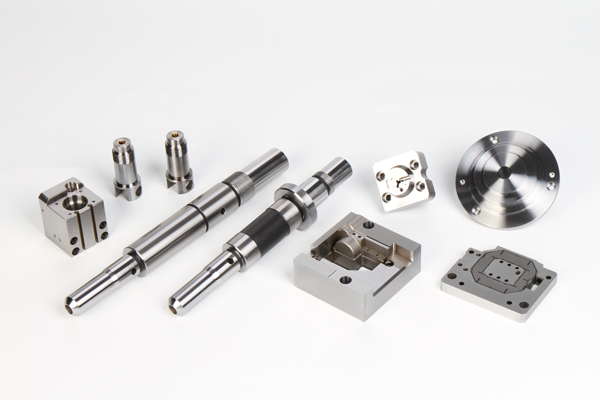
II. Countermeasures to Prevent Tungsten Carbide Die Sticking
In response to the above causes, we can explore the following methods to prevent tungsten carbide dies from sticking:
Precise Temperature Control
During the production process, it is essential to precisely control the die temperature and product temperature to avoid sticking problems caused by excessively high or low temperatures. This can be achieved through the use of a temperature control system, adjusting the cooling water flow rate, optimizing the heating method, etc. At the same time, it is also necessary to reasonably set the preheating temperature and heating time of the die according to the material and shape of the product to ensure that the die maintains an appropriate temperature during production.
Selection of Appropriate Lubricants
Lubricants play a crucial role in preventing tungsten carbide die sticking. Choosing the right lubricant can reduce the friction between the die and the material and minimize sticking. When selecting a lubricant, factors such as the properties of the material, processing method, and production environment should be fully considered. A lubricant with excellent lubricating performance, high-temperature resistance, and wear resistance should be selected. At the same time, attention should be paid to controlling the amount and uniformity of the lubricant during use to ensure that the die surface is adequately lubricated.
Optimization of Die Design
Die design is one of the key factors affecting sticking. During the die design stage, factors such as the properties of the material, processing method, and product requirements should be fully considered to reasonably design the structure, dimensions, and surface roughness of the die. For example, measures such as reducing the complexity of the die, avoiding sharp corners and dead angles, and optimizing the die’s venting system can be taken to lower the risk of sticking. In addition, special surface treatment technologies such as nitriding and sandblasting can also be used to improve the hardness and wear resistance of the die surface, further reducing the possibility of sticking.
Selection of Appropriate Materials
The properties of the material have a direct impact on sticking. When selecting tungsten carbide die materials, factors such as hardness, wear resistance, and coefficient of thermal expansion should be fully considered to select high-quality materials that meet production requirements. At the same time, when selecting product materials, factors such as viscosity and surface tension should also be fully considered to select materials that match well with the die. For some special products, such as high-temperature alloys and stainless steel, special processing technologies and treatment methods may need to be adopted to reduce the risk of sticking.
Strengthening Die Maintenance and Care
Die maintenance and care are also important for preventing sticking. During use, the wear and damage of the die should be regularly inspected, and severely worn parts should be replaced promptly. At the same time, the die surface should be regularly cleaned to remove oil stains and impurities and keep the die surface clean and smooth. During maintenance, special lubricants and protective agents can also be used to protect the die surface and extend the service life of the die.
Utilizing Simulation Software for Prediction and Optimization
With the continuous development of computer technology, using simulation software for product design and die design has become a trend. Through simulation software, the hot spot risk areas that may occur during the production process can be predicted, allowing corresponding measures to be taken during the die design stage to reduce the risk of sticking. In addition, simulation software can also help optimize the structure of the product and the design of the die, improving production efficiency and product quality.
III. Conclusion
Tungsten carbide die sticking is a complex problem involving multiple aspects such as temperature control, lubrication, die design, and material selection. To effectively prevent sticking, comprehensive measures need to be taken from multiple aspects. By precisely controlling the temperature, selecting appropriate lubricants, optimizing die design, selecting appropriate materials, strengthening die maintenance and care, and utilizing simulation software for prediction and optimization, the risk of tungsten carbide die sticking can be significantly reduced, improving production efficiency and product quality.


